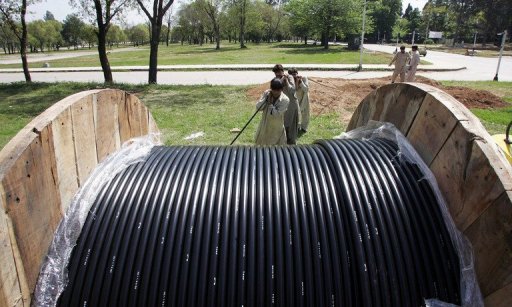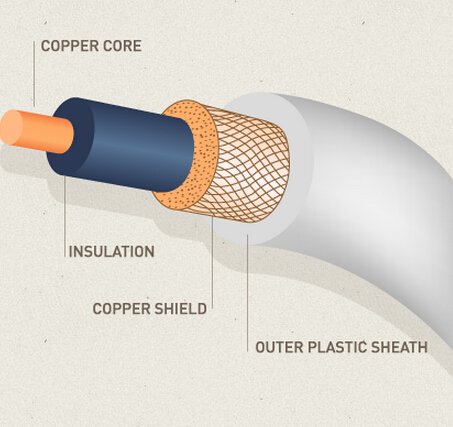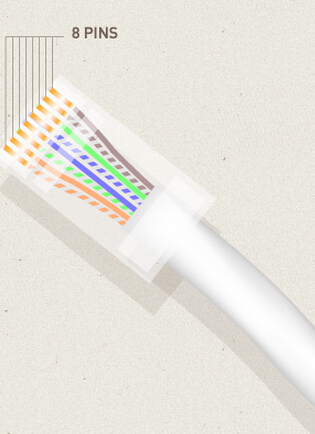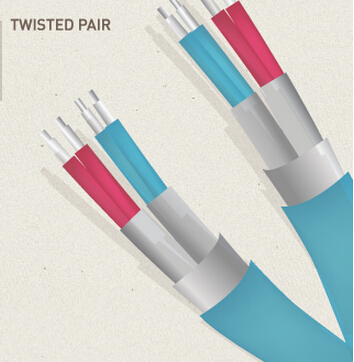In recent years, fiber optic cable is becoming one of the most popular transmission mediums for both new cabling installations and upgrades, including backbone, horizontal, and even desktop applications. As fiber offers a number of advantages over copper, people now more prefer to use fibers. This paper gives you 8 main reasons why to choose fiber optics but not copper.

Fiber provides more bandwidth than copper and has standardized performance up to 10 Gbps and beyond. More bandwidth means fiber can carry more information with greater fidelity than copper wire. Keep in mind that fiber speeds are dependent on the type of cable used. Single-mode fiber offers the greatest bandwidth and no bandwidth requirements.
Laser-optimized OM3 50-micron cable has an EMB of 2000 MHz/km. Laser-optimized OM4 50-micron cables has an EMB of 4700 MHz/km.
Because the fiber optic signal is made of light, very little signal loss occurs during transmission, and data can move at higher speeds and greater distances. Fiber does not have the 100-meter (328-ft.) distance limitation of unshielded twisted pair copper (without a booster). Fiber distances depend on the style of cable, wavelength and network. Distances can range from 550 meters (984.2 ft.) for 10-Gbps multimode and up to 40 kilometers (24.8 mi.) for single-mode cable.
Your data is safe with fiber cable. It doesn’t radiate signals and is extremely difficult to tap. If the cable is tapped, it’s very easy to monitor because the cable leaks light, causing the entire system to fail. If an attempt is made to break the physical security of your fiber system, you’ll know it.
Fiber networks also enable you to put all your electronics and hardware in one central location, instead of having wiring closets with equipment throughout the building.
Fiber provides extremely reliable data transmission. It’s completely immune to many environmental factors that affect copper cable. The core is made of glass, which is an insulator, so no electric current can flow through. It’s immune to electrometric interference and radio-frequency interference (EMI/RFI), crosstalk, impedance problems, and more. You can run fiber cable next to industrial equipment without worry. Fiber is also less susceptible to temperature fluctuations than copper and can be submerged in water.
Fiber is lightweight, thin, and more durable than copper cable. To get higher speeds using copper cable, you need to use a higher grade of cable, which typically have larger outside diameters, weight more, and take up more space in cable trays. With fiber cable, there is very little different in diameter or weight. Plus, fiber optic cable has pulling specifications that are up to 10 times greater than copper cable, depending on the specific cable. Its small size makes it easier to handle, and it takes up much less space in cabling ducts. And, fiber is easier to test than copper cable.
The proliferation and lower costs of media converters are making copper to fiber migration much easier. The converters provide seamless links and enable the use of existing hardware. Fiber can be incorporated into network in planned upgrades. In addition, with the advent of 12- and 24-strand MPO cassettes, cables, and hardware, planning for future 40- and 100-GbE networks is easier.
Although fiber is still more difficult to terminate than copper, advancements in technology have made terminating and using fiber in the field easier. Quick fusion splicers enables with auto-alignments enable fast splicing in the field. Auto-aligning pins ensure accuracy. And the use of pig-tails and pre-terminated cable make field connections quick and easy.
The cost for fiber cable, components, and hardware has steadily decreased. Overall, fiber cable is more expensive than copper cable in the short run, but it may be less expensive in the long run. Fiber typically costs less to maintain, has less downtime, and requires less networking hardware. In addition, advances in field termination technology has reduced the cost of fiber installation as well.
Fiberstore is a professional manufacturer and supplier of fiber optic subsystems and components. We offers high-quality fiber optic cables for your fiber projects. In addition, we offers OEM or custom service, so that you could order the fiber optic cables according to your unique requirements. Welcomed the Advisory! (Contact us: sales@fs.com/+1-425-226-2035)



